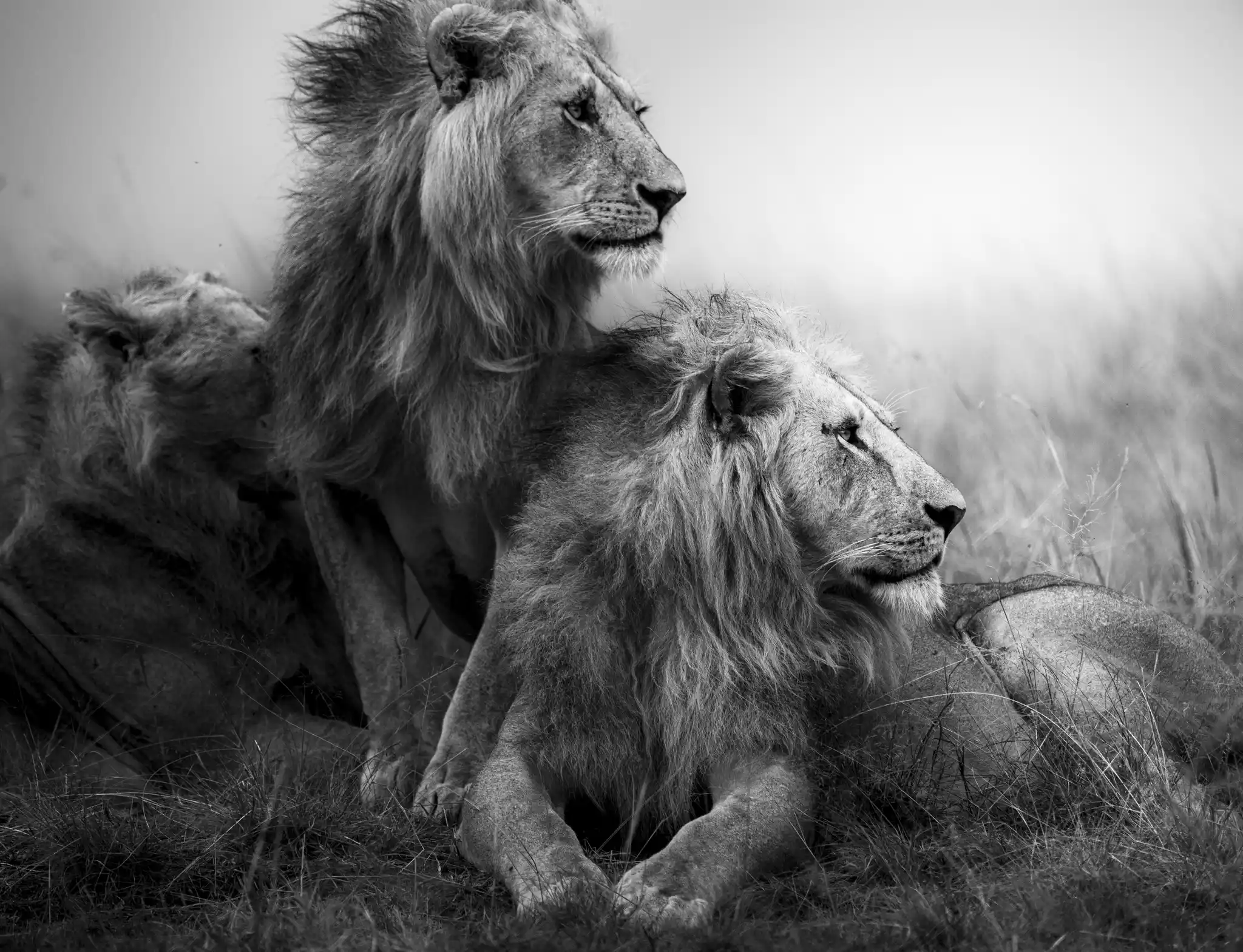Menu
Big Five
Wildlife
Encounters with Africa’s Giants
Seeing the 'big five' on safari is a must for any wildlife enthusiast. The term ‘Big Five’ came from the early game hunters and refers to a group of animals that are considered to be the most dangerous species to hunt on foot.
What are the Big Five?
Named after their difficulty to hunt, the 'big five' consists of the African Elephant, African Leopard, Cape Buffalo, Black Rhino and, of course, the African Lion.
Where can you see the Big Five?
These magnificent species can be seen in destinations such as Kenya, Tanzania and South Africa, as well as some less-thought-of places, like Botswana, Zambia and Zimbabwe.


When is the Best Time to See the Big 5?
The best time to see the Big 5 is during the peak safari season from July to October. The cool, dry winter means less vegetation for wildlife to hide behind and the lack of rain means wildlife will congregate around the lakes and rivers and most wildlife wont stray too far from the little water left. Leopards spend most of their time in trees, so are easier to spot with the fewer leaves.
Big Five Safari Destinations
South Africa
Kruger National Park (specifically the Sabi Sands) - The wildlife you are likely to encounter on safari in the Kruger area is undoubtedly magnificent, including the ‘Big Five’ game. The Kruger area comprises a cluster of enormous private reserves allowing you to veer off the obvious route and deeper into the surrounding area. Fencing was removed years ago, enabling the abundant game to move completely freely between the national park and the reserves.
Where to stay: Dulini Leadwood, Singita Boulders, Chitwa Chitwa.
Tanzania
Ngorongoro Crater - The attraction of game to this area comes from the high fertility of the soil along with a year-round supply of water, satisfying one of the highest concentrations of life in Africa. Measuring approximately 16 miles in diameter, tusker elephants, leopard, rhino and lion all roam the depths of the crater. It is a place where wildlife and game viewing is easy and excellent year-round, making it one of Tanzania’s most popular places to visit, and the best location in the country to view the ‘Big Five’.
Where to stay: The Highlands, Nomad Entamanu, &Beyond Ngorongoro Crater lodge.
Kenya
Lewa Conservancy in Laikipia - It is estimated that 10% of Kenya’s black rhino community are found here in Lewa, so it is a great place for Big Five game sighting whilst avoiding the crowds. Many northern game species are found here, such as gerenuk, Grevy’s Zebra, Jackson’s hartebeest and the reticulated giraffe. It is also the only area to have a growing population of wild dogs, and there are burgeoning numbers of leopard, lion, rhino, elephant and many other game species.
Where to stay: Lewa House, Sirakoi, Lewa Wilderness
Botswana
Moremi Game Reserve & Okavango Delta
Okavango Delta – the world-renowned Okavango Delta forever sets the mind racing. The fan-shaped delta feeds a network of fertile wetlands and lagoons, breathing life into the surrounding lands and forming ideal grazing lands for herbivores galore. Where there are herbivores there are predators.
Where to stay: Hyena Pan in Moremi, Duba Plains for Okavango Delta.
Meet Africa’s Big Five
Big Five FAQ
Is it safe to see the Big Five?
Your guides brief you on what to do and how to follow their lead closely. They are so well trained in wildlife behaviour, so it makes you feel at ease how they can explain what the animals are doing and why or what you need to do. Guides know well the signs that animals are relaxed and when they are not so relaxed, they will stay away. Animals sort of see the jeep as a whole, not six people sitting in a car, so it’s not something they are bothered by as it’s not something they see as predator or prey.







